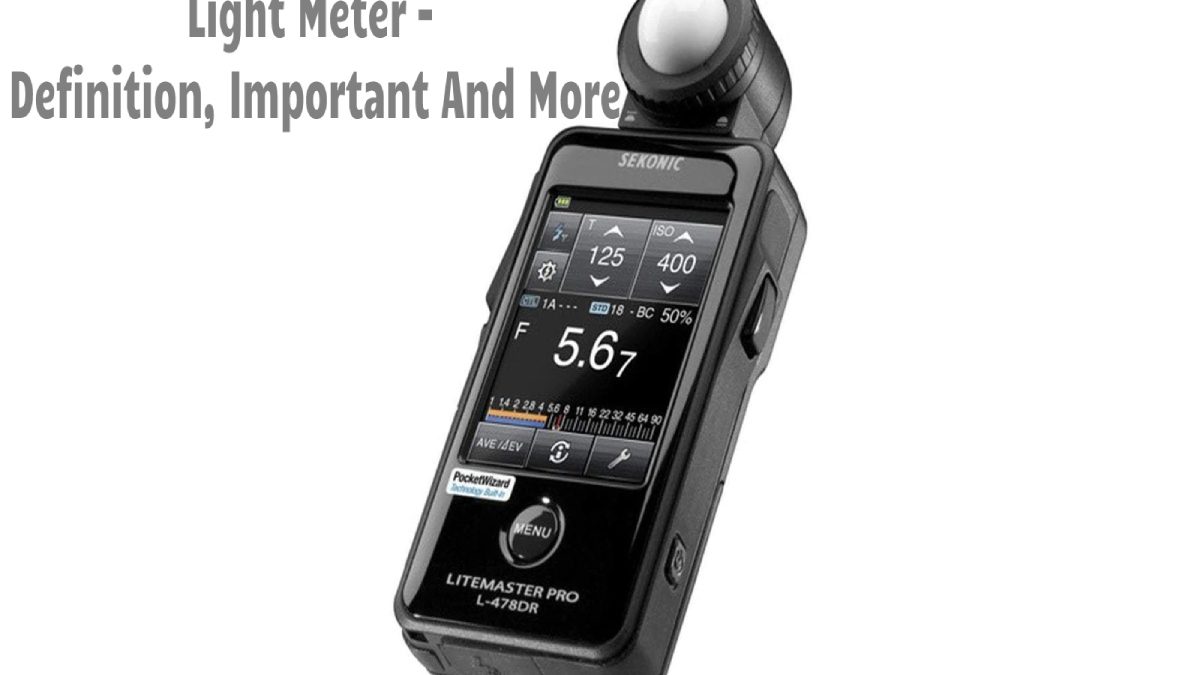Table of Contents
Light Meter – Definition
Light Meter: We love photography, and we’re sure you do. Capturing a moment and preserving it for posterity is an art, and there are instruments available to assist us in taking beautiful images. We’ll look at one of them today: the camera light meter.
Dealing with low light situations is one of the most challenging problems in photography, even for the most experienced photographers and the most modern equipment. Fortunately, the camera light meter can provide a clear picture of the lighting conditions, essential for adjusting the camera and producing an excellent photograph.
We know you can’t wait to see this gadget and start taking stunning images. So to assist you, we’ve developed this helpful tutorial to familiarise you with the camera light meter. But, first, we’ll go through the ins and outs of this gadget that may very well become your new favorite photographic gear.
Importants of Light Meter
There are two types of light meter differentiated from the light they measure: incident light and reflect light. The former measures the actual light present in a scene, while the latter measures the amount of light reflected from an object, depending on its color and tone.
To choose the ideal light meter for you, you must consider your level of experience, the reading angle of the lght meter (in the case of product or portrait photography), the resistance of thelight meterr to weather factors (for outdoor photography), and whether the meter has the function of distinguishing the flash.
The Best Light Meter: Our Recommendations
The following three meters vary in complexity and number of features, but they are some of the best available on the market, and indeed, any of the three will help you get the best possible results. Regardless of which one you choose, photographic exposure problems will be a thing of the past.
Shopping Guide
Now that you know the best electricity light meter on the market, let’s analyze what defines this helpful device. This buying guide section will go over a light meter main features and functions and buying factors, cost, and where to buy it.
Purchase Standards Level of Experience
The light meter is not essential in photography. It’s just a support tool that helps us produce good results more quickly by helping us understand lighting conditions. Therefore, not all photographers require it, which will determin primarily based on their experience level.
Beginner: If you are a beginner and are not familiar with the parameters of a camera, the chances are that the light meter built into your camera will be more than enough. Mainly if you usually use it in automatic mode. If you want to use a light meter, we recommend familiarizing yourself with the camera’s parameters.
Expert: The light meter is suitable for those who are familiar with the photographic concepts of ISO, aperture, and shutter, as the light meter readings are what help you adjust these three factors optimally. If these concepts are familiar to you and you want more information to set up your shot. The light meter is a good idea
Also Read: 7 Powerful Marketing Techniques For New Freelance Writers
Reading Angle
To get a light reading with a meter, you need to point it at the object. The accuracy of this action varies according to the reading angle of the meter—the more significant the rise, the less accurate the measurement, and vice versa. Grades on commercial light meters vary between 1 and 10 degrees.
We recommend that your meter reading angle be one degree for best results and accuracy. This data must come in the technical data sheet of the product. It is not necessary for landscape photography because, in this case, you are not photographing an object as such but a scene with infinite depth.
Flash Distinction
Many photographers, particularly studio photographers, rely on flash to produce high-quality shots. Although avoided in many types of photography, flash under controlled conditions can be very useful. For example, if you are considering a light meter and use a flash. The meter must be able to distinguish the beat.
The flash is light so that it could skew the readings of a simple meter. These meters can distinguish natural light from the second. So you can tell how much of the light present is coming from the moment.
Without distinction: Suitable for outdoor or landscape photographers, disciplines that do not depend on flash to produce the best results. The cost of non-flash gauges is usually slightly less, but at the expense of erroneous readings when using the moment.
Resistance to Weather Conditions
Shooting landscapes and outdoor scenes can be tricky due to weather conditions. Extreme rain, heat, or cold can put your gear at risk. Therefore, it is essential to ensure that your meter is resistant to weather factors to prevent it from being damag. The most important ones to consider are:
Water: Unlike devices such as cell phones. There is no universal certification to which electricity meters will be subject to water resistance. However, this is undoubtedly a standard feature. In addition, the resistance level varies by model. So you must read the instructions for your meter.
Heat: Indispensable for those who practice photography under the sun. Keep in mind that heat-resistant electricity meters tend to have thicker cases, making them heavier and slightly more expensive. Consult your meter’s manual to know what the maximum temperature supported is.
Dust: Like many other electronic devices, dust can damage or inhibit the meter’s proper function if it finds its way inside. Therefore, dust-resistant light meters are helpful for photography in dirty conditions.
Also Read: What Is The Best RC Helicopter Available?





Review Light Meter – Definition, Important And More.